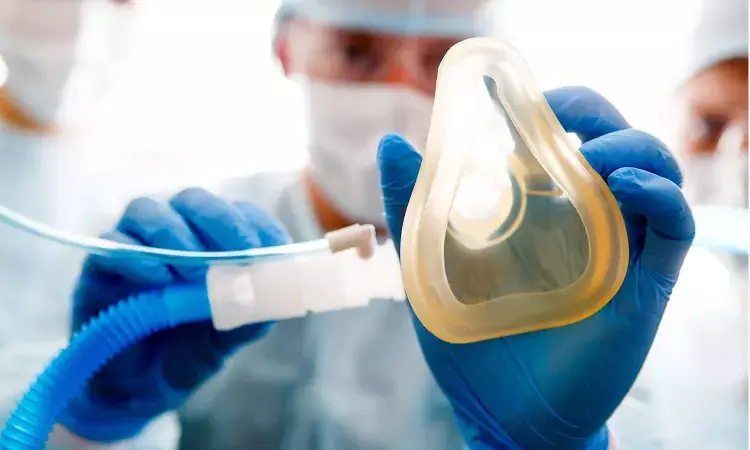- Home
- Medical news & Guidelines
- Anesthesiology
- Cardiology and CTVS
- Critical Care
- Dentistry
- Dermatology
- Diabetes and Endocrinology
- ENT
- Gastroenterology
- Medicine
- Nephrology
- Neurology
- Obstretics-Gynaecology
- Oncology
- Ophthalmology
- Orthopaedics
- Pediatrics-Neonatology
- Psychiatry
- Pulmonology
- Radiology
- Surgery
- Urology
- Laboratory Medicine
- Diet
- Nursing
- Paramedical
- Physiotherapy
- Health news
- Fact Check
- Bone Health Fact Check
- Brain Health Fact Check
- Cancer Related Fact Check
- Child Care Fact Check
- Dental and oral health fact check
- Diabetes and metabolic health fact check
- Diet and Nutrition Fact Check
- Eye and ENT Care Fact Check
- Fitness fact check
- Gut health fact check
- Heart health fact check
- Kidney health fact check
- Medical education fact check
- Men's health fact check
- Respiratory fact check
- Skin and hair care fact check
- Vaccine and Immunization fact check
- Women's health fact check
- AYUSH
- State News
- Andaman and Nicobar Islands
- Andhra Pradesh
- Arunachal Pradesh
- Assam
- Bihar
- Chandigarh
- Chattisgarh
- Dadra and Nagar Haveli
- Daman and Diu
- Delhi
- Goa
- Gujarat
- Haryana
- Himachal Pradesh
- Jammu & Kashmir
- Jharkhand
- Karnataka
- Kerala
- Ladakh
- Lakshadweep
- Madhya Pradesh
- Maharashtra
- Manipur
- Meghalaya
- Mizoram
- Nagaland
- Odisha
- Puducherry
- Punjab
- Rajasthan
- Sikkim
- Tamil Nadu
- Telangana
- Tripura
- Uttar Pradesh
- Uttrakhand
- West Bengal
- Medical Education
- Industry
Perioperative management of malignant hyperthermia: BJA Consensus Guideline

Delhi: The European Malignant Hyperthermia Group has released consensus guidelines on perioperative management of malignant hyperthermia suspected or susceptible patients.
Malignant hyperthermia (MH) is a potentially fatal condition, in which genetically predisposed individuals develop a hypermetabolic reaction to potent inhalation anaesthetics or succinylcholine. Because of the rarity of malignant hyperthermia and ethical limitations, there is no evidence from interventional trials to inform the optimal perioperative management of patients known or suspected with malignant hyperthermia who present for surgery.
Furthermore, as the concentrations of residual volatile anaesthetics that might trigger a malignant hyperthermia crisis are unknown and manufacturers' instructions differ considerably, there are uncertainties about how individual anaesthetic machines or workstations need to be prepared to avoid inadvertent exposure of susceptible patients to trigger anaesthetic drugs.
The guideline, published in the British Journal of Anaesthesia, are intended to bundle the available knowledge about perioperative management of malignant hyperthermia-susceptible patients and the preparation of anaesthesia workstations.
Key recommendations include:
- Indications for pharmacological premedication are the same for MH-susceptible patients as those not predisposed to MH.
- Only trigger-free anaesthesia should be used in all MH-susceptible patients.
- If trigger-free anaesthesia is provided, then an MH-susceptible patient will not need any extra monitoring during anaesthesia compared with a patient with the same condition and preoperative status, but not predisposed to MH.
- MH-susceptible patients can receive standard care in the recovery room (PACU) after surgery.
- MH-susceptible patients may be anaesthetised in an outpatient setting avoiding all volatile anaesthetics and succinylcholine whilst following national guidelines for ambulatory general anaesthesia.
- Specific pre- or postoperative blood tests are not necessary in MH-susceptible patients.
- Anaesthetic breathing circuit (T-circuit, circle circuit, and reservoir bag) and soda lime should be changed for uncontaminated equipment before the anaesthesia machine is flushed.
- Anaesthesia machine and breathing circuit should be flushed with a maximum fresh gas flow of at least 10 L min−1 (oxygen, air, or any mixture) throughout the preparation period.
- In the absence of specific recommendations from the manufacturer, during machine preparation, the tidal volume can be set at 600 ml and ventilatory frequency at 15 bpm for an adult patient when mechanical ventilation is used.
- Activated charcoal filters licensed for this purpose, which effectively reduce volatile anaesthetic concentrations to <5 ppm, may be used to minimise anaesthesia machine preparation time.
- Reduce fresh gas flow from >10 to 3 L min−1 when activated charcoal filters (ACFs) are placed and breathing circuit and soda-lime canister are changed.
- After ACFs are placed and breathing circuit and soda-lime canister are changed, usual fresh gas flows can be used with a minimum of 1 L min−1.
- Activated charcoal filters should be kept in place during the entire general anaesthesia procedure.
"These guidelines from the EMHG describe how to minimise the risk of triggering an MH reaction when preparing to anaesthetise MH-susceptible patients. This includes preparation of the anaesthetic workstation for safe and trigger-free general anaesthesia, with and without the use of ACFs. The guidelines are based on available evidence and the opinions of MH experts from a large group of laboratories studying MH around the world," wrote the authors.
Reference:
"Consensus guidelines on perioperative management of malignant hyperthermia suspected or susceptible patients from the European Malignant Hyperthermia Group," is published in the British Journal of Anaesthesia.
DOI: https://bjanaesthesia.org/article/S0007-0912(20)30787-X/fulltext#secsectitle0040
Dr Kamal Kant Kohli-MBBS, DTCD- a chest specialist with more than 30 years of practice and a flair for writing clinical articles, Dr Kamal Kant Kohli joined Medical Dialogues as a Chief Editor of Medical News. Besides writing articles, as an editor, he proofreads and verifies all the medical content published on Medical Dialogues including those coming from journals, studies,medical conferences,guidelines etc. Email: drkohli@medicaldialogues.in. Contact no. 011-43720751


